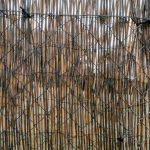Chickens are social creatures with a hierarchical structure known as a pecking order within their flock. This hierarchy determines dominance and submission among individual birds. When feeding chickens, it’s essential to consider this social dynamic and provide adequate space and resources to ensure all birds can access food without intimidation from more dominant flock members.
Chickens also exhibit natural foraging behaviors, such as scratching and pecking at the ground in search of food. These instinctive actions should be taken into account when selecting feeders and establishing feeding routines. The dietary requirements of chickens are specific and varied.
A balanced chicken diet consists of grains, seeds, fruits, vegetables, and protein sources. Understanding these nutritional needs is crucial for choosing appropriate feed and feeding equipment. Chickens are creatures of habit and respond well to consistent routines.
They quickly adapt to regular feeding times and locations, which facilitates the implementation of feeding schedules and encourages them to eat in designated areas.
Table of Contents
- 1 Choosing the right feeder for your chickens
- 2 Implementing a feeding schedule
- 3 Using feeders with built-in barriers
- 4 Utilizing feeders with adjustable heights
- 5 Keeping the feeding area clean and organized
- 6 Training chickens to eat from designated areas
- 7 FAQs
- 7.1 What are some effective ways to keep chickens from scattering feed?
- 7.2 How can using a feeder with a cover help prevent chickens from scattering feed?
- 7.3 What is a treadle feeder and how can it help prevent chickens from scattering feed?
- 7.4 Why is it important to feed chickens in a designated area?
Key Takeaways
- Chickens are social animals and have a natural pecking order within their flock
- Consider the size and age of your chickens when choosing the right feeder
- Establish a consistent feeding schedule to regulate the chickens’ eating habits
- Feeders with built-in barriers can help prevent food wastage and reduce competition
- Adjustable height feeders can accommodate different sizes of chickens and minimize feed spillage
Choosing the right feeder for your chickens
Size of the Flock
The first consideration is the size of your flock. If you have a large number of chickens, you’ll need a feeder that can accommodate multiple birds at once.
Durability and Ease of Use
In addition to size, the feeder should be durable and able to withstand the pecking and scratching of the chickens. It’s also important to choose a feeder that is easy to clean and refill, as hygiene is crucial for the health of your flock.
Types of Feeders
There are several types of feeders to choose from, each with its own advantages. Trough feeders are ideal for larger flocks as they can hold a large amount of feed and allow multiple chickens to eat at once. Tube feeders are great for preventing waste and keeping the feed dry, while gravity feeders are convenient for keeping a constant supply of feed available. Consider the specific needs of your flock and the layout of your coop when choosing the right feeder for your chickens.
Implementing a feeding schedule

Implementing a feeding schedule is essential for maintaining the health and well-being of your flock. Chickens thrive on routine and will quickly learn when to expect food. A consistent feeding schedule will also help prevent overeating and reduce waste.
When implementing a feeding schedule, it’s important to consider the specific dietary needs of your flock. For example, laying hens require a diet high in calcium to support egg production, while growing chicks need a diet high in protein for proper development. It’s also important to consider the natural behavior of chickens when implementing a feeding schedule.
Chickens are most active in the morning and will be eager to eat as soon as they are let out of their coop. Providing food first thing in the morning will help keep your flock happy and healthy. Additionally, it’s important to monitor the amount of feed your chickens consume and adjust the feeding schedule as needed.
By paying attention to their behavior and dietary needs, you can ensure that your flock is getting the nutrition they need to thrive.
Using feeders with built-in barriers
Feeders with built-in barriers are a great option for preventing waste and keeping feed clean. These types of feeders typically have a grid or barrier that prevents chickens from scratching or kicking the feed out onto the ground. This not only reduces waste but also helps keep the feeding area clean and organized.
Additionally, feeders with built-in barriers can help prevent more dominant chickens from monopolizing the feed, ensuring that all birds have access to food. These types of feeders are especially useful for larger flocks where competition for food can be an issue. By using feeders with built-in barriers, you can help reduce aggression and ensure that all chickens have equal access to feed.
This can help maintain a harmonious pecking order within the flock and reduce stress among the birds. Overall, feeders with built-in barriers are a great option for keeping your feeding area clean, organized, and efficient.
Utilizing feeders with adjustable heights
Feeders with adjustable heights are another great option for accommodating the needs of different chickens within a flock. These types of feeders allow you to raise or lower the feeding tray to accommodate different sizes of chickens. This is especially useful for flocks that include both full-grown hens and smaller chicks.
By using feeders with adjustable heights, you can ensure that all chickens have easy access to food without having to reach or stretch too far. Additionally, feeders with adjustable heights can help prevent waste by keeping the feed at an optimal level for the chickens to reach. This can help reduce spillage and keep the feeding area clean and organized.
By accommodating the specific needs of your flock with adjustable height feeders, you can ensure that all chickens are getting the nutrition they need without any unnecessary stress or competition.
Keeping the feeding area clean and organized

Why a Clean Feeding Area Matters
Keeping the feeding area clean and organized is essential for maintaining the health and well-being of your flock. A clean feeding area helps prevent the spread of disease and reduces the risk of pests such as rodents or insects. Additionally, a clean feeding area can help reduce stress among the chickens by providing a comfortable and hygienic environment for them to eat.
Practical Tips for Keeping the Feeding Area Clean
To keep the feeding area clean and organized, it’s important to regularly clean and sanitize the feeders. Remove any leftover feed or debris from the feeding area and refill the feeders with fresh, clean feed regularly. Additionally, consider using feeders with built-in barriers or adjustable heights to help prevent waste and keep the feeding area tidy.
The Benefits of a Clean Feeding Area
By maintaining a clean and organized feeding area, you can help ensure that your flock stays healthy and happy.
Training chickens to eat from designated areas
Training chickens to eat from designated areas can help reduce waste and prevent aggression within the flock. By designating specific feeding areas within the coop or run, you can encourage chickens to eat in an organized manner without fighting over food. One way to train chickens to eat from designated areas is by using positive reinforcement.
For example, you can use treats or mealworms to lure chickens to the designated feeding area and reward them for eating there. Another method for training chickens to eat from designated areas is by using physical barriers or dividers to separate different feeding stations within the coop or run. This can help prevent more dominant chickens from monopolizing the food and ensure that all birds have equal access to feed.
By training your chickens to eat from designated areas, you can help maintain a harmonious pecking order within the flock and reduce stress among the birds. In conclusion, understanding the behavior of chickens is crucial when it comes to choosing the right feeder, implementing a feeding schedule, and maintaining a clean and organized feeding area. By considering their natural behavior and dietary needs, you can ensure that your flock is getting the nutrition they need to thrive.
Choosing the right feeder for your chickens involves considering factors such as size, durability, and ease of cleaning. Implementing a feeding schedule based on their natural behavior and dietary needs will help maintain their health and well-being. Using feeders with built-in barriers or adjustable heights can help prevent waste and ensure that all chickens have equal access to food.
Keeping the feeding area clean and organized is essential for preventing disease and reducing stress among the flock. Finally, training chickens to eat from designated areas can help maintain a harmonious pecking order within the flock and reduce competition for food. By taking these factors into consideration, you can ensure that your flock is happy, healthy, and well-fed.
If you’re looking for tips on how to keep chickens from scattering feed, you might also be interested in this article on how to build a chicken coop in Muskegon. Creating a well-designed and secure coop can help prevent chickens from wasting feed and keep them happy and healthy.
FAQs
What are some effective ways to keep chickens from scattering feed?
Some effective ways to keep chickens from scattering feed include using a feeder with a cover, using a treadle feeder, and feeding chickens in a designated area.
How can using a feeder with a cover help prevent chickens from scattering feed?
Using a feeder with a cover can help prevent chickens from scattering feed by keeping the feed contained and inaccessible to the chickens unless they actively peck at the feed through the openings in the cover.
What is a treadle feeder and how can it help prevent chickens from scattering feed?
A treadle feeder is a type of feeder that is designed with a weighted treadle that opens the feeder’s access door when a chicken steps on it. This helps prevent chickens from scattering feed by only allowing them access to the feed when they actively step on the treadle.
Why is it important to feed chickens in a designated area?
Feeding chickens in a designated area can help prevent them from scattering feed by containing the feeding activity to a specific location. This can also help reduce waste and make it easier to clean up any spilled feed.
Meet Walter, the feathered-friend fanatic of Florida! Nestled in the sunshine state, Walter struts through life with his feathered companions, clucking his way to happiness. With a coop that’s fancier than a five-star hotel, he’s the Don Juan of the chicken world. When he’s not teaching his hens to do the cha-cha, you’ll find him in a heated debate with his prized rooster, Sir Clucks-a-Lot. Walter’s poultry passion is no yolk; he’s the sunny-side-up guy you never knew you needed in your flock of friends!







